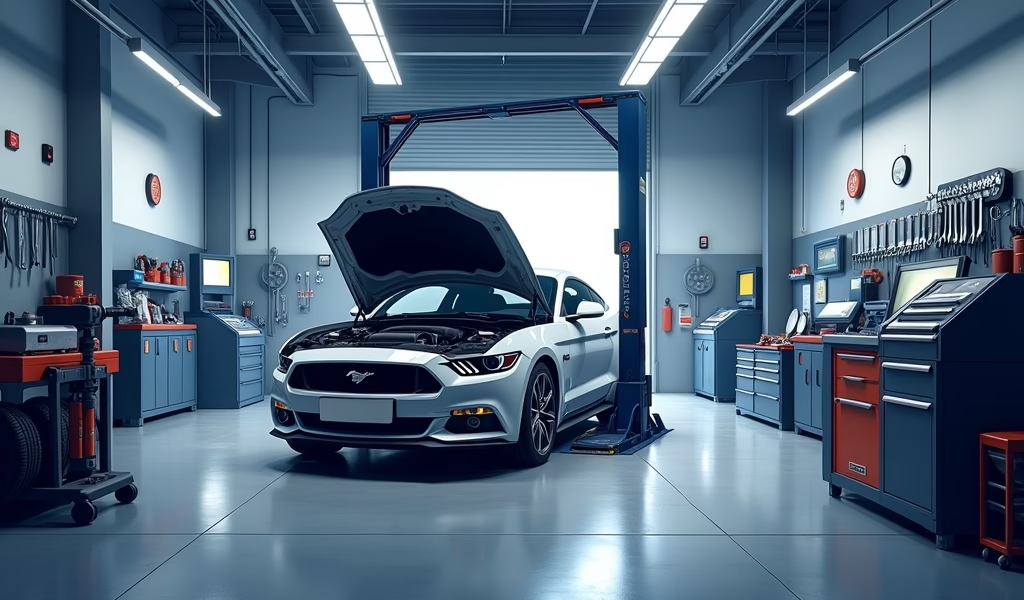Overview
This article outlines seven essential car maintenance practices that can significantly increase a vehicle’s resale value, including regular oil changes, tire care, brake maintenance, battery upkeep, fluid monitoring, filter replacements, and keeping detailed maintenance records. Properly maintained vehicles with documented service histories can command 15-25% higher prices in the used car market, providing owners both better driving experiences and stronger financial returns when selling.
Table of Contents
- Understanding Car Maintenance for Better Sales Value
- 1. Regular Oil Changes: The Lifeblood of Your Vehicle
- 2. Tire Care: The Foundation of Vehicle Performance
- 3. Brake System Maintenance: Safety First
- 4. Battery Maintenance: Preventing Unexpected Failures
- 5. Check and Maintain Fluid Levels Regularly
- 6. Filter Replacements: Keep Your Car Breathing Easy
- 7. Keep Detailed Maintenance Records
- Conclusion: Maximizing Your Vehicle’s Value
- Frequently Asked Questions
Understanding Car Maintenance for Better Sales Value
When it comes to car sales, the difference between getting top dollar and settling for less often comes down to one simple factor: how well you’ve maintained your vehicle. 🚗 As a professional mechanic with over 15 years in the field, I’ve seen countless vehicles lose thousands in value due to neglected maintenance. The good news? Proper maintenance not only preserves your car’s value but also saves you money in the long run.
Last month, I helped John, a regular customer, sell his 10-year-old Honda Accord for nearly $3,000 above the average market price simply because he followed a disciplined maintenance routine. The buyer was impressed by the car’s condition and John’s detailed service records. This isn’t uncommon – well-maintained vehicles can fetch 15-25% higher prices in the used car market according to Kelley Blue Book research.
Whether you’re planning to sell your vehicle soon or want to maximize its eventual resale value years from now, these seven proven maintenance tips will help preserve your car’s condition and boost its appeal to potential buyers. Let’s dive into what truly matters when maintaining a vehicle for optimal resale potential.
1. Regular Oil Changes: The Lifeblood of Your Vehicle
Oil changes might seem like a basic maintenance task, but they’re absolutely fundamental to your engine’s health and longevity. 🛢️ Think of engine oil as your car’s bloodstream – it lubricates moving parts, removes heat, and prevents harmful deposits from forming.
For conventional oil, the standard recommendation is changing every 3,000-5,000 miles. If your vehicle uses synthetic oil, you can typically extend that to 7,500-10,000 miles. However, don’t just follow generic guidelines – consult your owner’s manual for manufacturer-specific recommendations, as modern vehicles often have different requirements.
I recently worked on a 2012 Toyota Camry with 200,000 miles that looked practically new under the hood. The owner, Sarah, never missed an oil change in 10 years of ownership. When we opened the engine for some unrelated work, the internal components showed minimal wear – a testament to consistent oil maintenance.
Pro tip: Always document your oil changes and use the recommended grade of oil. When showing your car to potential buyers, few things inspire more confidence than seeing regular oil services performed at the recommended intervals. This simple habit can add hundreds, if not thousands, to your selling price.

2. Tire Care: The Foundation of Vehicle Performance
Tires are one of the first things prospective buyers examine, and for good reason. They reveal volumes about how a car has been maintained. 🔄 Proper tire care involves several key practices:
- Regular rotation every 5,000-7,500 miles to ensure even wear patterns
- Maintaining correct air pressure according to manufacturer specifications
- Alignment checks, especially after hitting potholes or curbs
- Visual inspections for uneven wear, cracks, or bulges
The difference between well-maintained tires and neglected ones is stark. I recall a customer named Mike who was struggling to sell his Subaru Outback. After replacing his worn, unevenly aged tires with a new matching set for about $800, he received offers $1,500 higher than before – a net gain of $700 plus a much quicker sale.
For maximum resale value, consider replacing tires if they have less than 50% tread remaining when you’re preparing to sell. According to research by Consumer Reports, vehicles with newer tires typically command higher prices and sell much faster, often recovering the tire investment and then some.
When maintaining tires for eventual sale, keep records of rotations, alignments, and replacements. These documents demonstrate meticulous care and justify a premium price when it’s time to sell your vehicle.
3. Brake System Maintenance: Safety First
Nothing kills a test drive faster than squeaky, pulsating, or weak brakes. A well-maintained brake system not only ensures safety but also significantly impacts buyer confidence during that crucial test drive. 🛑
Brake maintenance should include:
- Inspecting pads and rotors every 10,000-15,000 miles
- Replacing brake fluid every 2 years (it’s hygroscopic and absorbs moisture over time)
- Addressing squeaks, grinding, or pulsation immediately
- Checking brake lines for leaks or deterioration
One memorable case involved a 2017 Ford Explorer that sat on a dealer’s lot for three months. The vehicle was priced right and looked great, but had a subtle pulsation during braking that scared away buyers. After resurfacing the warped rotors and replacing the pads (a $350 service), the SUV sold within a week.
From a buyer psychology perspective, brakes represent safety and care. A prospective buyer who feels strong, smooth brakes during a test drive is more likely to develop positive feelings about the entire vehicle. Conversely, problematic brakes send a powerful message that maintenance has been neglected.
When preparing your car for sale, have your brake system professionally inspected and address any issues. This investment consistently pays dividends through faster sales and stronger negotiating positions. Remember to keep all service records to show potential buyers.
4. Battery Maintenance: Preventing Unexpected Failures
A dead or weak battery can torpedo a car sale instantly. There’s nothing more embarrassing than having your vehicle fail to start during a showing! ⚡ Most car batteries last 3-5 years, but proper maintenance can extend this lifespan and ensure reliable performance.
Key battery maintenance practices include:
- Keeping terminals clean and free of corrosion
- Testing voltage regularly (a healthy battery should read 12.4-12.7 volts when the engine is off)
- Minimizing short trips that don’t allow for full charging
- Considering a battery tender for vehicles that sit for extended periods
I once helped a friend who couldn’t understand why his immaculate BMW 3 Series wasn’t selling. During the third showing, his battery died – the buyer walked away. After installing a new battery ($150) and having the charging system checked, the car sold the following weekend for full asking price.
When selling your car, a proactive battery replacement before listing can be a wise investment if your battery is more than three years old. According to AAA research, batteries are more likely to fail after the three-year mark, especially in extreme climates.
Don’t forget to mention recent battery replacement in your sale listing – it’s a small detail that signals comprehensive care and maintenance, especially appealing to first-time car buyers who worry about unexpected expenses.

5. Check and Maintain Fluid Levels Regularly
Your car depends on various fluids to operate correctly, and maintaining proper levels of these fluids is crucial for vehicle longevity and performance. 💧 Beyond oil, several other vital fluids require regular checks and replacements:
- Transmission fluid: Typically requires checking every 30,000-60,000 miles, depending on the vehicle
- Coolant/antifreeze: Should be flushed every 2-5 years
- Power steering fluid: Check levels monthly and replace according to manufacturer recommendations
- Brake fluid: Replace every 2 years regardless of mileage
- Windshield washer fluid: Top off regularly
These fluids are the unsung heroes of vehicle maintenance. One particularly striking example involved a customer’s 2014 Lexus RX350 that had never had its transmission fluid changed in 80,000 miles. Before listing it for sale, we performed a transmission service. The improvement in shift quality was remarkable – and the owner received $2,000 more than comparable listings in our area.
When preparing your vehicle for sale, consider having a fluid service package done. This typically costs $300-500 depending on the vehicle, but makes a tremendous difference in how the car performs during test drives. Fresh fluids also look better when a potential buyer checks under the hood – clean, full fluid reservoirs signal attentive ownership.
Keep a logbook of all fluid changes with dates and mileage. This level of detail demonstrates meticulous care that justifies premium pricing in the pre-owned market.
6. Filter Replacements: Keep Your Car Breathing Easy
Filters are your vehicle’s defense system against contaminants, and replacing them regularly is essential for optimal performance and longevity. 🌬️ There are four main filters to monitor:
- Engine air filter: Typically needs replacement every 15,000-30,000 miles
- Cabin air filter: Should be replaced every 15,000-25,000 miles
- Fuel filter: Generally requires changing every 30,000-50,000 miles on older vehicles
- Oil filter: Replace with every oil change
These simple maintenance items make a noticeable difference in performance. I recently helped a customer prepare her Honda CR-V for sale. The vehicle ran fine, but replacing the clogged engine air filter improved throttle response dramatically, making the SUV feel more responsive during test drives. The $20 filter likely added hundreds to her final sale price through improved driving dynamics.
The cabin air filter deserves special mention when selling your car. This often-overlooked component directly affects the in-cabin experience. A fresh cabin filter eliminates musty odors and improves air quality – crucial when buyers are sitting in your car making purchase decisions.
When showing your car to potential buyers, consider keeping the receipt for recent filter changes visible in your maintenance folder. Better yet, keep the old filters to show the difference – visual evidence of maintenance is incredibly powerful in building trust with buyers.
7. Keep Detailed Maintenance Records
The most meticulously maintained vehicle in the world will struggle to command top dollar without documentation to prove its care. 📋 Comprehensive maintenance records are perhaps the most valuable sales tool at your disposal.
Effective record-keeping should include:
- All service receipts organized chronologically
- A maintenance log showing service dates, mileage, and work performed
- Records of parts replaced, including brand names and warranty information
- Documentation of any manufacturer recalls addressed
- Before and after photos of significant repairs or improvements
The difference in buyer perception between “I think the timing belt was changed around 90,000 miles” and “Here’s the receipt showing the timing belt replacement at 89,752 miles, along with the water pump and tensioners” is enormous. The latter inspires confidence and justifies premium pricing.
Digital record-keeping has made this easier than ever. Apps like CARFAX Car Care, MyCarfax, and Drivvo allow you to track maintenance with your smartphone. Some even sync with service providers to automatically record dealer or shop visits.
When preparing to sell, organize these records in a clean folder or binder to present during showings. According to industry data, vehicles with complete maintenance records typically sell for 5-10% more than identical models without documentation.
Conclusion: Maximizing Your Vehicle’s Value
Proper maintenance isn’t just about preventing breakdowns—it’s an investment in your vehicle’s future value. 💰 By following these seven maintenance tips consistently, you’re positioning your car to stand out in a competitive marketplace when it’s time to sell.
Remember that buyers are looking for peace of mind above all else. A well-maintained vehicle with documented care provides exactly that. It tells potential buyers they can trust both the car and you as the seller.
The beauty of these maintenance practices is their dual benefit: they help you enjoy a more reliable, efficient vehicle while you own it, then reward you with higher resale value when you’re ready to move on.
For the greatest return on your car investment, start implementing these maintenance habits today. Your future self—and your wallet—will thank you when your vehicle commands top dollar in the marketplace. Whether you’re selling privately or trading in, these practices give you leverage to negotiate from a position of strength.
Frequently Asked Questions
How much value does regular maintenance add to a car’s resale price?
Well-maintained vehicles typically sell for 15-25% more than poorly maintained equivalents. This percentage increases for luxury or performance vehicles where maintenance is even more critical.
Which maintenance record is most important to car buyers?
Oil change records consistently rank as the most important to buyers. Regular oil changes suggest overall good maintenance habits and protect the engine, a car’s most expensive component.
Should I detail my car before selling it?
Absolutely! Professional detailing typically costs $150-300 but can add $500-1,000 to your selling price. First impressions are crucial in car sales.
Is it worth fixing cosmetic issues before selling?
Minor cosmetic repairs that cost less than $500 typically return 200% or more on investment. Major cosmetic repairs rarely recover their full cost unless they’re safety-related.
How long before selling should I complete maintenance tasks?
Ideally, complete all maintenance 2-4 weeks before listing your vehicle. This gives you time to address any unexpected issues that might arise during servicing.

